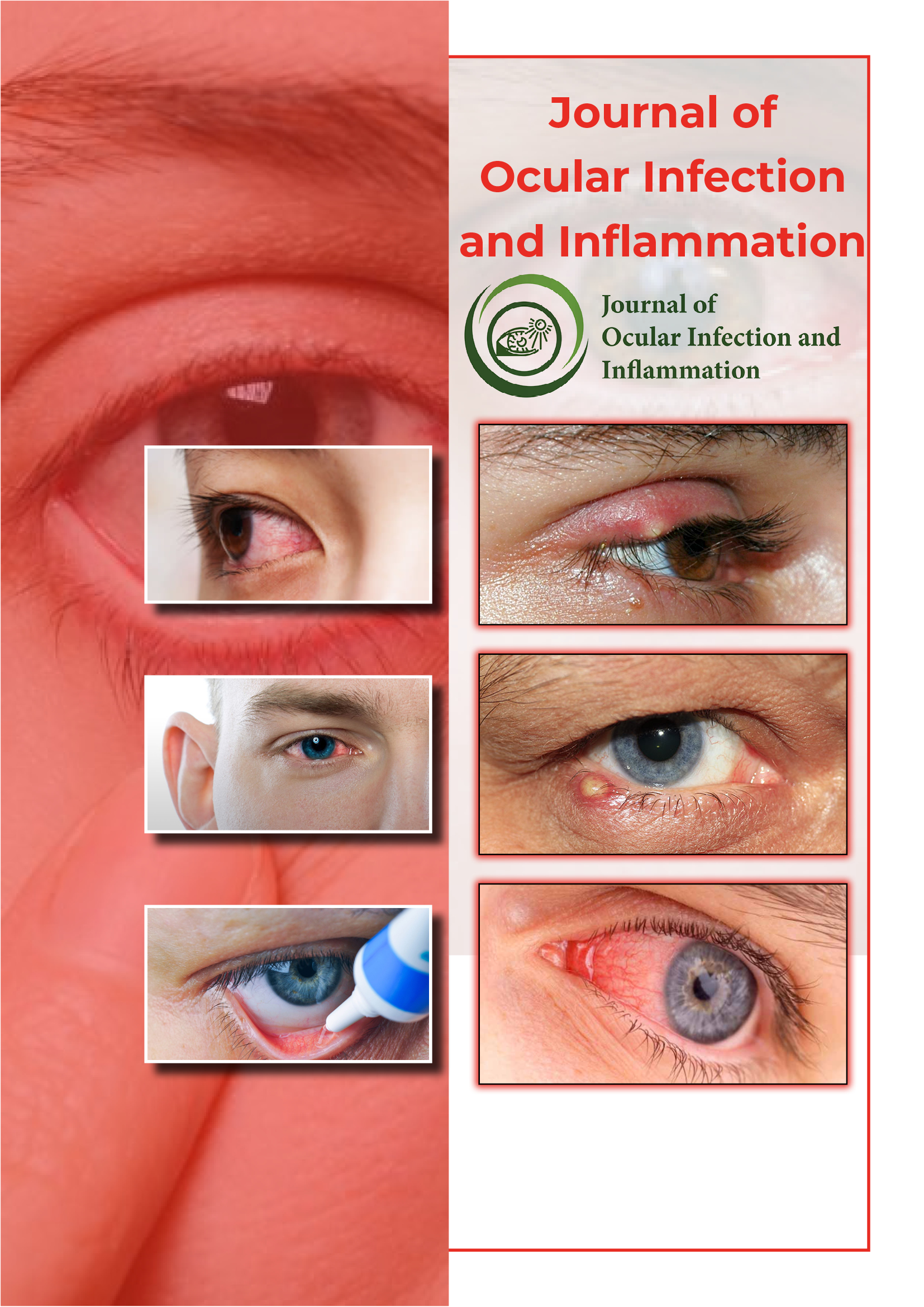Useful Links
Share This Page
Journal Flyer

Open Access Journals
- Agri and Aquaculture
- Biochemistry
- Bioinformatics & Systems Biology
- Business & Management
- Chemistry
- Clinical Sciences
- Engineering
- Food & Nutrition
- General Science
- Genetics & Molecular Biology
- Immunology & Microbiology
- Medical Sciences
- Neuroscience & Psychology
- Nursing & Health Care
- Pharmaceutical Sciences
Commentary - (2024) Volume 5, Issue 1
Surgical Strategies: Optimizing Visual Outcomes in Inflammatory Eye Conditions
Isaac Anthony*Received: 26-Feb-2024, Manuscript No. JOII-24-25612; Editor assigned: 28-Mar-2024, Pre QC No. JOII-24-25612 (PQ); Reviewed: 13-Mar-2024, QC No. JOII-24-25612; Revised: 20-Mar-2024, Manuscript No. JOII-24-25612 (R); Published: 27-Mar-2024, DOI: 10.35248/JOII.24.05.116
Description
Cataract surgery stands as a fundamental part of ophthalmic intervention, providing a chance for individuals with visual defects to explore. However, the decision to follow surgery becomes significantly complex when facing ocular inflammatory diseases, which contain a spectrum from uveitis to scleritis, including non-infectious inflammatory eye diseases like autoimmune uveitis. These conditions not only complicate the surgical procedure itself but also introduce changes regarding postoperative outcomes. In this commentary, we undertake an examination of the recent study explaining long-term visual clarity outcomes following cataract surgery in eyes affected by ocular inflammatory disease. Through detailed analysis, we aim to explore the significance of these findings for clinical practice and describe methods for future research activities.
Long-term visual clarity exploration
The study is exploring new areas, exploring the direction of visual clarity beyond the immediate postoperative phase in a cohort afflicted by ocular inflammatory disease. Through carefully following patients for a long time, the researchers reveal a sign of progress. Contrary to common notions, the study reveals that a significant proportion of patients experience sustained improvements in visual clarity following cataract surgery, going against what doctors thought might happen with eye problems.
Importance of post-operative monitoring
However, within the signs, there are complicated challenges that are common in eye inflammation. The study highlights the increased chance of problems in this group of people who are exposed. We need to carefully watch patients after surgery. It's important to use customized treatments because eye inflammation can show up in many different ways in real-life situations. This innovative approach demands interdisciplinary collaboration, with rheumatologists and immunologists assuming a vital role in reducing systemic inflammation and optimizing surgical outcomes.
Addressing clinical considerations
The importance of the study's discoveries spreads across clinical practice. The findings are causing clinicians to rethink how they usually treat eye inflammation. Clinicians have to balance making sure patients can see better with keeping their eyes safe from harm. Preoperative optimization assumes importance, necessitating a comprehensive assessment of disease activity, systemic conditions, and potential contraindications. Intraoperative considerations extend beyond the technical complications of surgery to surround careful selection of surgical technique and intraocular lens, customized to the unique anatomical and inflammatory environment of each patient.
Future directions
Long-term studies involving more people and different causes of inflammation are needed, which have the potential to help us understand what determines how well people see it in the long term and improve our predictions about it. Additionally, advancements in imaging technology and biological indicators present the compelling potential to forecast treatment outcomes and customize treatments for individuals, bringing us to the next phase of highly specific eye care.
In conclusion, the study on long-term visual clarity outcomes following cataract surgery in ocular inflammatory disease represents a seminal contribution to the field of ophthalmic research. The findings not only question current ideas but also highlight the need for a detailed approach, patient-centered approach to management. With this knowledge, clinicians are ready to handle the challenges of cataract surgery in eye inflammation with more confidence, bringing in a new time of personalized treatments and better results.
Citation: Anthony I (2024) Surgical Strategies: Optimizing Visual Outcomes in Inflammatory Eye Conditions. J Ocul Infec Inflamm. 05:116.
Copyright: © 2024 Anthony I. This is an open-access article distributed under the terms of the Creative Commons Attribution License, which permits unrestricted use, distribution, and reproduction in any medium, provided the original author and source are credited.

